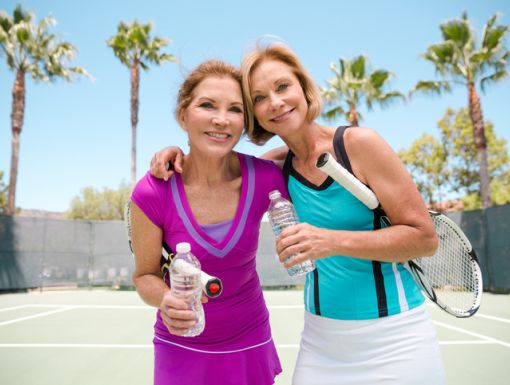
What it Means to Have Dense Breasts
Breast density varies from woman to woman but across the female population, there are four different categories of breast density on mammograms, as defined by radiologists:
- 10% have almost entirely fatty tissue
- 40% have scattered fibroglandular densities
- 40% have heterogeneously dense tissue
- 10% have extremely dense tissue
If you have “dense” breast tissue, you should still be screened for breast cancer with mammograms. Mammograms are the only medical imaging screening test proven to reduce breast cancer deaths, by up to 48% in recent observational studies. Dense tissue increases the risk of breast cancer slightly (relative risk of 1.2).
In 2015, the Monica Landry Helo Early Detection Law was passed into law in Louisiana. As part of this law, all patients having mammograms receive letters with the following information:
"If your mammogram demonstrates that you have dense breast tissue, which could hide abnormalities, and you have other risk factors for breast cancer that have been identified, you might benefit from supplemental screening tests that may be suggested by your ordering physician. Dense breast tissue, in and of itself, is a relatively common condition. Therefore, this information is not provided to cause undue concern, but rather to raise your awareness and to promote discussion with your physician regarding the presence of other risk factors, in addition to dense breast tissue. A summary of your mammography results will be sent to you, and a full mammography report will be sent to your physician and also to you. You should contact your physician if you have any questions or concerns regarding your summary or report of results."
In addition to the summary letters that are already sent to patients after a mammogram, facilities transmit the full narrative radiology reports for mammograms and breast ultrasounds directly to patients under this law.
Generally, “dense” on a mammogram means “heterogeneously dense” or “extremely dense”. Your density category is included in your mammogram report. An ultrasound does not measure density.
Types of Breast Tissue
Breast tissue is composed of two types of tissue: fatty tissue, which appears gray on mammograms, and fibroglandular tissue, which appears white or dense on mammograms. Cancers cells or tumors also appear white on mammograms.
Types of Breast Cancer Screenings
For women with dense breast tissue the most important point to remember is to get your yearly screening mammogram. Screening mammograms are the best way to detect and find breast cancer. Screening recommendations are exactly the same for women with dense breasts as for the rest of the population. At this time, no society or association recommends additional screening tests for dense breast tissue. There is not a recommendation that mammography be replaced with another test.
Other breast cancer screenings include:
- Breast Tomosynthesis (also known as “3D mammography”) - Is performed simultaneously with screening mammogram. Early data is encouraging for increased cancer detection in dense tissue and it also decreases false positives.
- Screening Breast MRI - Shown to substantially increase cancer detection. Recommended in patients at very high risk for breast cancer (>20% lifetime risk), but it does have a high rate of false positives.
- Screening Breast Ultrasound - Small studies of this type of ultrasound have shown a modest increase in cancer detection, but it does have a high rate of false positives.
Note that the availability of these screenings varies by location and office and they may not be covered by all insurance policies.
Breast Cancer Screening Guidelines
While several societies and associations have differing recommendations on the timing of when women should have mammograms, all agree that the most lives are saved with yearly screening mammograms starting at age 40.
- American College of Radiology – yearly mammograms starting at 40.
- American Cancer Society:
- All should have opportunity to begin yearly screenings at age 40.
- 40-44: Discuss risk tolerance with your healthcare provider
- 45-54: Yearly
- 55 & older: Yearly or Biennially
- USPSTF:
- 50-74: Biennial mammograms



